What's the Fastest Car in the World?

Welcome to the thrilling world of automotive speed and performance! Are you ready to satisfy your curiosity and discover the answer to the burning question, "What's the Fastest Car in the World?" If you're someone with a thirst for knowledge and a fascination with cutting-edge technology, you've come to the right place. In this article, we'll take you on an exhilarating journey through the realm of supercars and hypercars, exploring the pursuit of ultimate speed, the engineering marvels behind these machines, and the top contenders vying for the title of the fastest car in the world. Get ready to buckle up and join us as we delve into the heart-pounding world where velocity reigns supreme and automotive limits are pushed to unimaginable heights.
Have you ever wondered how automotive engineers harness the power of speed? In this section, we will delve into the captivating concept of speed in automotive engineering and uncover the fascinating mechanisms that allow cars to reach incredible velocities. It's not merely about pushing the accelerator; it's a carefully orchestrated symphony of advanced technologies and precision craftsmanship.
At the heart of understanding speed in automotive engineering lies the powertrain, the beating heart of every car. The powertrain consists of the engine, transmission, and drivetrain components that work together harmoniously to deliver power to the wheels. Engineers optimize these components to achieve an optimal balance between power, efficiency, and speed.
To propel a car to high speeds, engineers focus on maximizing horsepower and torque. Horsepower represents the engine's ability to do work over time, while torque measures the twisting force applied to the wheels. By fine-tuning these factors, automotive manufacturers create vehicles that can accelerate rapidly and reach breathtaking speeds.
Aerodynamics also plays a crucial role in the pursuit of speed. Engineers meticulously design car bodies to minimize drag and optimize airflow, allowing the vehicle to slice through the air with minimal resistance. Sleek contours, integrated spoilers, and cleverly positioned vents work together to reduce turbulence and enhance stability, enabling cars to achieve higher speeds while maintaining control.
Advanced materials and lightweight construction are integral to achieving remarkable speed. The use of carbon fiber, aluminum alloys, and other lightweight materials reduces the overall weight of the vehicle, improving power-to-weight ratio and enhancing acceleration. Every gram saved translates into better performance and a higher top speed.
Cutting-edge technologies, such as turbocharging and supercharging, have revolutionized the world of speed. These forced induction methods increase the amount of air and fuel supplied to the engine, resulting in more power output. The additional horsepower generated gives cars the capability to achieve astonishing speeds that were once thought impossible.
As automotive engineering continues to advance, so does our understanding of speed. Engineers push the boundaries, striving to create cars that surpass previous limits and redefine what's possible. The pursuit of speed is not simply about breaking records; it represents the relentless quest for innovation and the continuous drive to push the envelope of automotive performance.
So, the next time you witness a high-performance car zooming by, remember that behind the scenes, a symphony of engineering marvels is at work. Speed in automotive engineering represents the culmination of years of research, development, and a burning desire to unlock the true potential of these machines. It's a testament to human ingenuity and the endless pursuit of excellence.

The inception of supercars can be traced back to the mid-20th century, with legendary models like the Lamborghini Miura and the Ferrari Daytona setting the stage for a new era of automotive excellence. These early supercars showcased powerful engines, striking aesthetics, and groundbreaking technologies that left a lasting impact on the industry.
Over the years, supercars have undergone significant advancements, fueled by advancements in engineering and design. The 1980s witnessed the rise of turbocharging, with iconic models like the Porsche 959 and the Ferrari F40 utilizing this technology to achieve mind-boggling speeds. These cars became the epitome of automotive performance, pushing the boundaries of what was previously deemed possible.
As we entered the new millennium, supercars entered an era of unprecedented innovation. The introduction of hybrid powertrains brought forth a new wave of performance, blending electric motors with internal combustion engines to deliver mind-bending acceleration and improved fuel efficiency. Models such as the McLaren P1 and the Porsche 918 Spyder exemplified the perfect synergy between sustainability and speed.
In recent years, technology has continued to shape the evolution of supercars. Advanced aerodynamics, active suspension systems, and intelligent drivetrains have become commonplace, allowing these vehicles to achieve even greater levels of performance and handling precision. The quest for speed has never been more exhilarating.
To illustrate the evolution of supercars, let's take a closer look at some key milestones:
| Year | Iconic Supercar | Notable Features |
|---|---|---|
| 1966 | Lamborghini Miura | Mid-engine layout, stunning design |
| 1971 | Ferrari Daytona | Front-engine V12, exceptional top speed |
| 1984 | Ferrari Testarossa | Flat-12 engine, iconic side strakes |
| 1992 | McLaren F1 | Carbon fiber construction, record-breaking speed |
| 2004 | Porsche Carrera GT | V10 engine, race-inspired technology |
| 2013 | LaFerrari | Hybrid powertrain, unmatched performance |
| 2022 | McLaren Artura | Hybrid powertrain, lightweight construction |
These examples represent just a fraction of the incredible supercars that have graced the automotive landscape over the years. Each model represents a significant leap forward in terms of performance, technology, and design.
As we move forward, the evolution of supercars shows no signs of slowing down. With advancements in electric and autonomous technologies, we can expect to see a new generation of supercars that redefine our perception of speed and luxury. The future is poised to be an exhilarating fusion of performance, sustainability, and cutting-edge innovation.
So, whether you're a fan of the classics or fascinated by the latest advancements, the evolution of supercars serves as a testament to human ingenuity and the endless pursuit of automotive excellence. Strap in and get ready to witness the evolution unfold before your eyes as we dive deeper into the world of these extraordinary machines.

Prepare to enter a realm where speed meets luxury, where engineering meets artistry - the world of hypercars. In this section, we will embark on an exhilarating journey as we introduce you to these extraordinary machines that push the limits of automotive performance and redefine what's possible on the road.
Hypercars are the pinnacle of automotive engineering, representing the highest level of performance, innovation, and exclusivity. They are the result of meticulous craftsmanship, cutting-edge technologies, and uncompromising dedication to pushing boundaries. These vehicles are not just about speed; they offer a complete sensory experience that captivates and thrills.
What sets hypercars apart from their supercar counterparts is their uncompromising pursuit of perfection. These machines boast mind-boggling power, aerodynamic designs, and lightweight construction, all working in perfect harmony to deliver unmatched performance. Acceleration that pins you to your seat, top speeds that defy logic, and handling that defies the laws of physics - hypercars have it all.
In the realm of hypercars, performance is measured not just by horsepower and top speed, but also by cutting-edge technologies. Many hypercars embrace hybrid powertrains, leveraging the synergy between electric motors and internal combustion engines to unlock astonishing acceleration and enhanced efficiency. These advanced propulsion systems allow for instantaneous torque delivery and eco-conscious performance.
Furthermore, the design language of hypercars is a feast for the eyes. Sleek lines, aggressive contours, and aerodynamic elements work together to create visually striking masterpieces. Every curve and crease is carefully sculpted to optimize airflow and enhance stability, ensuring that these machines not only look incredible but also maximize performance.
To fully appreciate the engineering marvels that are hypercars, let's explore some remarkable examples:
- The McLaren P1, with its hybrid powertrain, boasts a mind-bending 903 horsepower and accelerates from 0 to 60 mph in a mere 2.8 seconds.
- The iconic Bugatti Chiron combines exquisite luxury with extraordinary power, featuring an 8.0-liter W16 engine producing a staggering 1,479 horsepower and reaching a top speed of over 260 mph.
- The Rimac C_Two showcases the future of hypercars, blending all-electric power with jaw-dropping performance. With an astounding 1,914 horsepower and cutting-edge technology, it blurs the line between dreams and reality.
These examples are just a glimpse into the world of hypercars, where engineering brilliance and artistic expression come together to create automotive masterpieces.
So, whether you're a curious enthusiast or simply intrigued by the sheer audacity of these machines, exploring the realm of hypercars will undoubtedly ignite your passion for automotive excellence. Buckle up as we continue our journey through the world of speed, power, and unparalleled craftsmanship.

Aerodynamics is the science of shaping airflow around a vehicle to minimize drag and maximize downforce. Every curve, crease, and vent on a supercar or hypercar is meticulously designed to optimize airflow, ensuring that the vehicle slices through the air with minimal resistance. By reducing drag, engineers can increase top speed and fuel efficiency, enhancing the overall performance of the vehicle.
One key element of aerodynamics is the use of spoilers and wings. These aerodynamic appendages are strategically placed to generate downforce, which helps keep the car stable at high speeds. The downforce increases traction, allowing the tires to maintain better grip on the road or track. As a result, the car can corner with precision and maintain stability during intense acceleration and deceleration.
To illustrate the impact of aerodynamics, let's look at some examples:
| Supercar | Top Speed (mph) | Downforce (lbs) |
|---|---|---|
| Bugatti Veyron | 267 | 882 |
| Lamborghini Huracán Performante | 202 | 750 |
| McLaren 720S | 212 | 550 |
As you can see from the table, these high-performance machines generate substantial downforce, ensuring optimal traction and stability, even at astonishing speeds. The interplay between aerodynamics, speed, and downforce is a delicate balance that engineers fine-tune to create the ultimate driving experience.
In addition to aerodynamics, supercars and hypercars employ a myriad of high-performance technologies to enhance their capabilities. These technologies include:
Active Aerodynamics: Some vehicles feature movable aerodynamic components that can adjust their position based on driving conditions, optimizing downforce or reducing drag as needed.
Advanced Suspension Systems: High-performance vehicles often employ sophisticated suspension systems that can adapt to different driving modes, providing optimal handling and comfort.
Carbon Ceramic Brakes: These brakes offer exceptional stopping power while significantly reducing weight, allowing for shorter braking distances and improved performance.
Launch Control: Many supercars incorporate launch control systems that optimize traction and acceleration during standing starts, delivering lightning-fast 0-60 mph times.
Hybrid Powertrains: Hybrid hypercars leverage electric motors to provide instant torque, boosting acceleration and reducing emissions, without compromising performance.
The integration of these advanced technologies ensures that supercars and hypercars deliver mind-bending performance, exhilarating handling, and unparalleled driving experiences.
In the world of automotive engineering, the pursuit of aerodynamic efficiency and the integration of high-performance technologies go hand in hand. By harnessing the power of airflow and leveraging cutting-edge innovations, these remarkable machines achieve feats that were once unimaginable. So, prepare to be amazed as we continue our exploration into the realm of supercars and hypercars, where science and technology combine to create automotive marvels.

Embark on a journey through time as we delve into the captivating history of land speed records. Throughout the years, individuals with an insatiable thirst for speed have pushed the boundaries, shattering records and leaving their indelible mark on automotive history. Join us as we uncover the remarkable milestones and the machines that propelled humanity into the realm of extraordinary velocity.
The fascination with land speed records can be traced back to the early 20th century when daredevils and visionaries started harnessing the power of engines to achieve unheard-of speeds. One of the earliest pioneers was Sir Malcolm Campbell, a British driver who set numerous records in the 1920s and 1930s. Campbell's iconic Blue Bird vehicles became synonymous with speed and held the record multiple times.
In the following decades, advancements in technology and engineering propelled land speed records to astonishing heights. Donald Campbell, the son of Sir Malcolm Campbell, etched his name in history by breaking the 400 mph barrier in 1964 with his vehicle, Bluebird CN7. His remarkable achievement captivated the world and paved the way for future speed enthusiasts to aim even higher.
One of the most iconic moments in land speed record history came in 1997 when the Thrust SSC (SuperSonic Car), driven by Andy Green, broke the sound barrier on land, reaching a mind-boggling speed of 763.035 mph (1,227.986 km/h). This monumental achievement solidified the Thrust SSC's place in the record books and showcased the extraordinary capabilities of human engineering.
Today, the pursuit of land speed records continues unabated. The Bloodhound LSR project aims to break the 1,000 mph barrier, utilizing a jet and rocket-powered car designed to conquer the vast salt flats of South Africa. With each new attempt, engineers, drivers, and enthusiasts collaborate to push the limits of what is possible and redefine the boundaries of speed.
Land speed records represent the culmination of human curiosity, technological advancements, and the unyielding determination to go faster than ever before. They capture the essence of our insatiable desire to conquer new frontiers and push the boundaries of what is considered possible.
So, join us as we explore the fascinating world of land speed records, where speed becomes a testament to human ingenuity and the indomitable spirit of those who dare to dream big. As we delve deeper into the history and achievements of these records, prepare to be captivated by the stories of those who dared to chase the impossible and leave an indelible mark on the annals of speed.

One of the most iconic figures in land speed record history is Sir Malcolm Campbell. Known for his distinctive Blue Bird vehicles, Campbell set numerous records during the 1920s and 1930s, captivating the world with his daring exploits. His son, Donald Campbell, followed in his footsteps, achieving remarkable feats of speed and breaking new ground.
Another notable pioneer is Art Arfons, an American racer who rose to prominence in the 1950s and 1960s. Arfons set multiple records using his Green Monster vehicles, powered by jet engines. His relentless pursuit of speed and innovation made him a legend in the world of land speed records.
Let's take a closer look at some of these legendary speedsters:
| Name | Notable Vehicles | Speed Achievements |
|---|---|---|
| Sir Malcolm Campbell | Blue Bird | Multiple records, including the first person to exceed 300 mph |
| Donald Campbell | Bluebird CN7 | First person to exceed 400 mph |
| Art Arfons | Green Monster | Set multiple records with jet-powered vehicles |
These individuals pushed the boundaries of what was considered possible, setting new records and paving the way for future speed enthusiasts. Their daring spirit and relentless pursuit of excellence serve as an inspiration for generations to come.
It's worth noting that land speed records have seen contributions from both men and women. People like Kitty O'Neil, Lee Breedlove, and many others have left their mark on the history of speed, showcasing that a passion for velocity transcends gender.
The legacy of these pioneers lives on in the hearts of speed enthusiasts and serves as a reminder of the human spirit's audacity and thirst for pushing limits. Their achievements continue to inspire and ignite the imagination of those who dare to dream of reaching new heights of speed.
So, as we celebrate the pioneers of speed, let us pay tribute to their fearless determination, unwavering spirit, and the remarkable feats they accomplished. Their names will forever be intertwined with the history of land speed records, reminding us that with passion, innovation, and a little bit of daring, anything is possible.

Prepare to be amazed as we dive into the exhilarating world of record-breaking attempts and notable milestones in the realm of land speed. Throughout history, speed enthusiasts and visionaries have pushed the boundaries, striving to reach new heights and set astonishing records. Join us as we explore some of the most remarkable achievements and the individuals who made them possible.
One of the most iconic record-breaking moments occurred in 1983 when Richard Noble, a British entrepreneur, broke the land speed record with his vehicle, Thrust2. This remarkable achievement saw the vehicle reach a staggering speed of 633.468 mph (1,019.468 km/h), setting a new benchmark for land speed records.
In 1997, the world witnessed an awe-inspiring event when the Thrust SSC, driven by Andy Green, became the first car to break the sound barrier on land. This monumental achievement, reaching a speed of 763.035 mph (1,227.986 km/h), showcased the immense capabilities of human engineering and solidified the Thrust SSC's place in history.
Another notable milestone occurred in 2019 when the Bloodhound LSR, driven by Andy Green, set a new land speed record for the fastest car over a mile. The vehicle reached a speed of 628 mph (1,010 km/h), demonstrating the relentless pursuit of the team and the remarkable performance of the car.
These record-breaking attempts are not only about achieving incredible speeds but also about pushing the boundaries of what is considered possible. Each attempt represents a convergence of cutting-edge engineering, aerodynamics, and advanced technologies, all aimed at unlocking the true potential of speed.
Behind every record-breaking attempt lies a team of dedicated individuals who pour their hearts and souls into these extraordinary endeavors. Engineers, designers, mechanics, and drivers work in harmony, driven by the desire to conquer new frontiers and leave their mark in the annals of speed.
These milestones serve as a testament to the indomitable human spirit and the relentless pursuit of progress. They inspire us to push the limits, to dream big, and to never settle for mediocrity. The world of land speed records continues to captivate and challenge us, reminding us that there are always new records to be set and new horizons to be conquered.
So, brace yourself for the adrenaline-pumping stories of record-breaking attempts and the individuals who dared to defy the limits of speed. As we delve deeper into the fascinating world of land speed records, let the achievements of these remarkable individuals inspire you to reach for the extraordinary.

In Formula 1, speed is the lifeblood of the sport. These high-performance machines accelerate from 0 to 60 mph in just a few seconds, reaching mind-bending speeds of over 200 mph on straightaways. The sport's pinnacle lies in achieving the fastest lap times, with drivers skillfully maneuvering through intricate circuits, harnessing every ounce of power and grip their cars possess.
Drag racing, on the other hand, is all about pure acceleration. In a matter of seconds, dragsters can reach speeds exceeding 300 mph, covering the quarter-mile distance in under four seconds. The sheer power and acceleration of these vehicles are awe-inspiring, leaving spectators on the edge of their seats.
Let's take a closer look at the role of speed in different motorsports disciplines:
| Motorsport | Notable Speed Statistics |
|---|---|
| Formula 1 | Top speeds of over 200 mph (322 km/h) |
| Drag Racing | Acceleration from 0 to 300+ mph in seconds |
| NASCAR | Top speeds approaching 200 mph (322 km/h) |
| Le Mans 24 Hours | Average speeds exceeding 150 mph (241 km/h) |
These figures represent just a fraction of the incredible speeds achieved in various motorsports. Speed is not only a measure of performance but also a test of skill, precision, and strategy. It requires drivers to make split-second decisions and navigate through challenging conditions, pushing themselves and their vehicles to the limit.
Beyond the excitement of speed, motorsports also drive innovation in automotive technology. The pursuit of higher speeds leads to advancements in aerodynamics, engine performance, and safety features. What starts on the race track often finds its way into production cars, benefiting everyday drivers with improved performance and safety standards.
Motorsports serve as a captivating platform where human and machine come together, showcasing the possibilities of speed and the limits of human capabilities. It's a celebration of precision engineering, strategy, and the indomitable spirit of competition.
So, whether you're a motorsport enthusiast or simply in awe of the power and grace these machines possess, the role of speed in motorsports is undeniable. It represents the quest for greatness, the pursuit of victory, and the unending thrill of pushing boundaries. As we continue to witness the exhilarating world of motorsports, let the roar of engines and the sight of speed ignite your passion for the extraordinary.
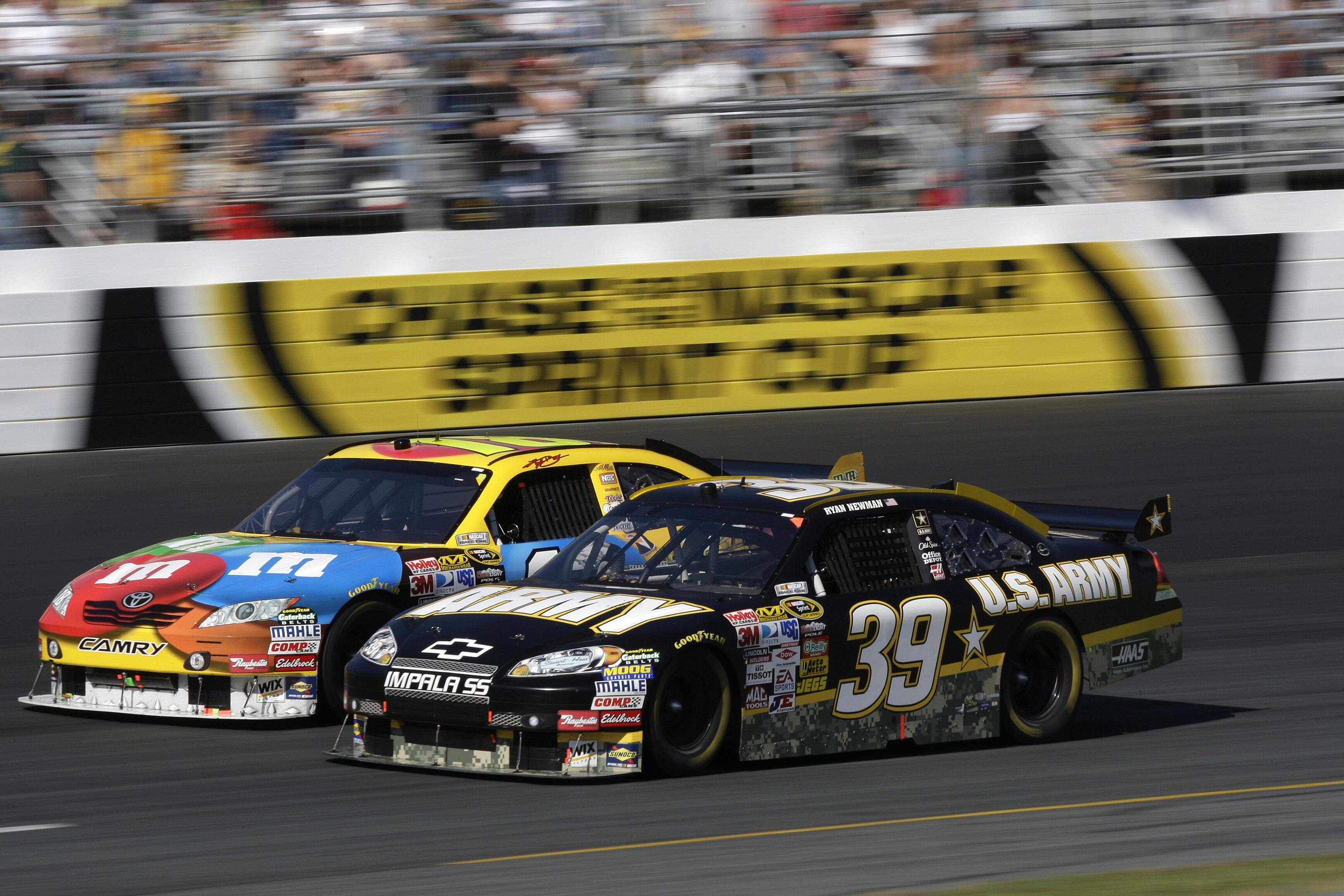
Hold on tight as we introduce you to the Bugatti Chiron Super Sport 300+, a marvel of automotive engineering that sets new standards for speed and performance. This extraordinary machine represents the epitome of power, luxury, and precision, taking automotive excellence to unprecedented levels.
With a top speed of over 300 mph (482 km/h), the Bugatti Chiron Super Sport 300+ has shattered records and captured the world's attention. This exceptional achievement makes it one of the fastest production cars ever created, a true testament to the relentless pursuit of speed and innovation.
Under the hood lies a quad-turbocharged 8.0-liter W16 engine, producing a mind-boggling 1,577 horsepower. The raw power is channeled through a sophisticated all-wheel-drive system, allowing for blistering acceleration and awe-inspiring performance.
But speed is not the only hallmark of the Chiron Super Sport 300+. The exquisite craftsmanship and attention to detail are evident throughout the vehicle. From the aerodynamic bodywork designed to optimize airflow to the opulent interior crafted with the finest materials, every element exudes elegance and luxury.
While the Bugatti Chiron Super Sport 300+ is a rare and exclusive masterpiece, it represents the cutting edge of automotive engineering and showcases what can be achieved when boundaries are pushed and limits are surpassed.
So, whether you're fascinated by the sheer speed or captivated by the flawless craftsmanship, the Bugatti Chiron Super Sport 300+ stands as a testament to the relentless pursuit of automotive perfection. Strap yourself in and prepare to be mesmerized by the remarkable capabilities of this extraordinary machine, where speed and luxury converge in a harmonious symphony of automotive excellence.
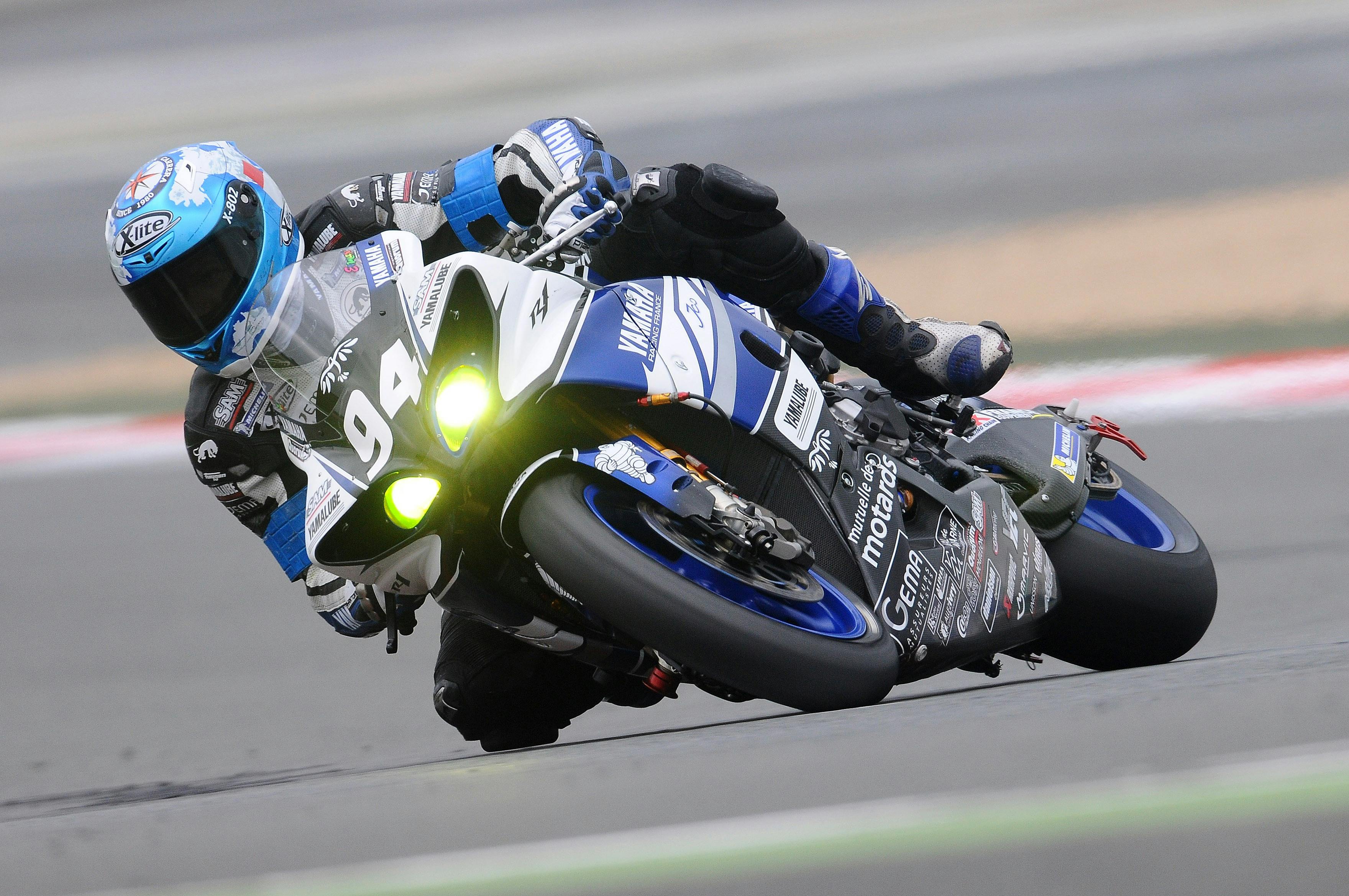
With its aerodynamic silhouette and cutting-edge technologies, the Jesko Absolut is built to dominate the road. It is powered by a twin-turbocharged 5.0-liter V8 engine, capable of producing an astounding 1,600 horsepower. This immense power propels the Jesko Absolut to astonishing speeds, making it one of the fastest cars ever produced.
To illustrate the performance of the Koenigsegg Jesko Absolut, let's take a look at some notable statistics:
| Koenigsegg Jesko Absolut | Stats |
|---|---|
| Top Speed | Estimated over 330 mph (531 km/h) |
| Horsepower | 1,600 horsepower |
| Acceleration (0-60 mph) | Less than 2.5 seconds |
| Weight | Approximately 3,000 lbs (1,360 kg) |
| Advanced Aerodynamics | Optimized for low drag |
These figures represent the remarkable capabilities of the Jesko Absolut, which is designed to deliver unparalleled speed and performance. The aerodynamic design, combined with advanced engineering solutions, allows the car to slice through the air with minimal resistance, maximizing its potential for speed.
Beyond its blistering performance, the Jesko Absolut offers a refined and luxurious interior, showcasing a blend of comfort and cutting-edge technology. Every detail, from the handcrafted finishes to the innovative features, is meticulously crafted to create an exceptional driving experience.
The Koenigsegg Jesko Absolut is a testament to the relentless pursuit of automotive perfection. It pushes the boundaries of what's possible, combining engineering prowess, advanced technologies, and exquisite craftsmanship to create a masterpiece on wheels.
As you delve into the world of high-performance supercars, the Jesko Absolut stands out as a true contender, representing the pinnacle of speed, power, and luxury. It captures the essence of automotive excellence and invites you to experience the thrill of pushing the limits of what is considered possible. Buckle up and prepare to be captivated by the extraordinary capabilities of the Koenigsegg Jesko Absolut.

Get ready to witness a masterpiece of engineering as we introduce you to the SSC Tuatara, a formidable supercar that redefines the limits of speed and performance. This remarkable machine combines aerodynamic precision, cutting-edge technology, and raw power to deliver an exhilarating driving experience like no other.
The SSC Tuatara is equipped with a twin-turbocharged 5.9-liter V8 engine, capable of producing an astounding 1,750 horsepower. This immense power, coupled with its lightweight design, enables the Tuatara to accelerate from 0 to 60 mph in under 2.5 seconds and reach breathtaking speeds.
One of the most impressive aspects of the Tuatara is its top speed. With a verified top speed of 282.9 mph (455.3 km/h), the SSC Tuatara has claimed its place as one of the fastest production cars in the world. This achievement solidifies its status as an extraordinary feat of automotive engineering.
Beyond its remarkable speed, the Tuatara boasts a sleek and aerodynamic design that optimizes airflow, ensuring maximum performance and stability. Every curve and angle of this extraordinary machine is meticulously crafted to reduce drag and enhance downforce, enabling the car to slice through the air with precision.
The SSC Tuatara's performance and attention to detail extend to its interior, where the driver is surrounded by luxury and advanced technology. From the finest materials to state-of-the-art infotainment systems, the interior offers a harmonious blend of comfort and cutting-edge features, enhancing the overall driving experience.
As you immerse yourself in the world of high-performance supercars, the SSC Tuatara stands as a testament to the pursuit of automotive excellence. Its combination of blistering speed, meticulous engineering, and stunning design leaves an indelible impression on anyone who has the privilege of witnessing its prowess.
So, whether you're captivated by its breathtaking acceleration or mesmerized by its aerodynamic beauty, the SSC Tuatara is a true marvel that pushes the boundaries of what is possible in a production car. Brace yourself for an extraordinary journey as you explore the exceptional capabilities of the SSC Tuatara, where speed and engineering prowess merge to create a truly unforgettable driving experience.
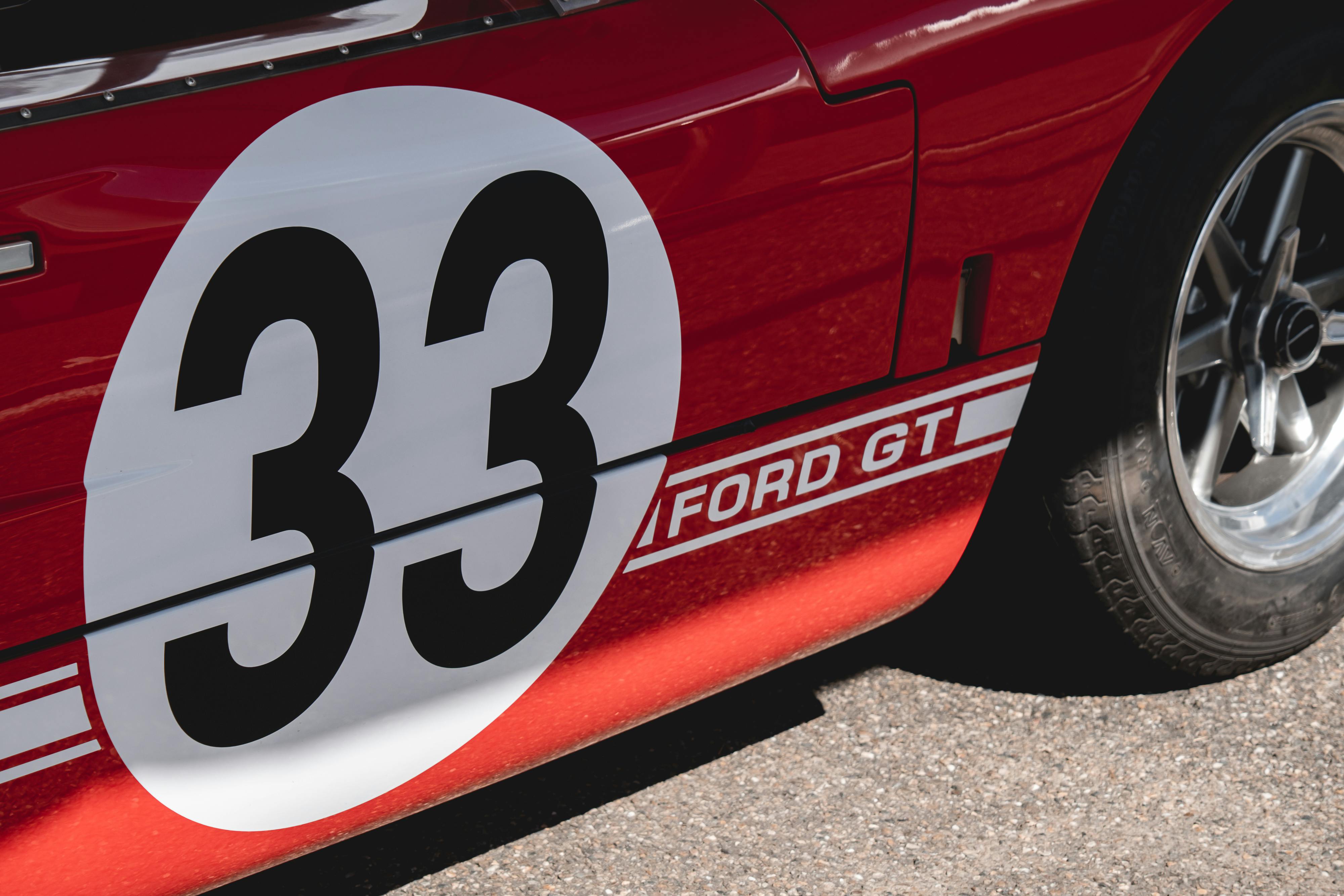
Equipped with a monstrous twin-turbocharged V8 engine, the Hennessey Venom F5 unleashes an astonishing 1,817 horsepower, propelling it to unparalleled speeds. With a verified top speed of 311 mph (501 km/h), the Venom F5 has set its sights on becoming the fastest production car in the world.
Let's take a closer look at some notable statistics that showcase the incredible performance of the Hennessey Venom F5:
| Hennessey Venom F5 | Stats |
|---|---|
| Top Speed | Verified 311 mph (501 km/h) |
| Horsepower | 1,817 horsepower |
| Acceleration (0-60 mph) | Under 2.0 seconds |
| Carbon Fiber Construction | Lightweight and agile |
| Advanced Aerodynamics | Optimized for speed |
These numbers exemplify the jaw-dropping capabilities of the Venom F5, which is designed to dominate both the racetrack and the road. Its lightweight carbon fiber construction, combined with advanced aerodynamics, ensures incredible stability and performance at blistering speeds.
The Venom F5 isn't just about raw power; it also boasts a meticulously crafted interior that offers a blend of luxury and technology. From high-quality materials to cutting-edge infotainment systems, every detail is designed with the driver's comfort and enjoyment in mind.
What sets the Hennessey Venom F5 apart is not just its incredible performance but also the unwavering pursuit of perfection by the team behind its creation. Each car is meticulously built and undergoes rigorous testing to ensure it meets the highest standards of quality and performance.
As you immerse yourself in the world of hypercars, the Hennessey Venom F5 captivates with its stunning design, mind-boggling speed, and relentless pursuit of automotive excellence. It represents the pinnacle of engineering and serves as a testament to what can be achieved when passion and innovation collide.
Prepare to be amazed as you witness the extraordinary capabilities of the Hennessey Venom F5, a true titan in the realm of hypercars. Whether you're captivated by its breathtaking acceleration or its striking design, the Venom F5 will leave an indelible impression as a symbol of automotive greatness.

Get ready to embark on an electrifying journey as we introduce you to the Rimac C_Two, a groundbreaking electric hypercar that pushes the boundaries of performance and innovation. Prepare to be captivated by its exceptional capabilities and its role in shaping the future of automotive engineering.
The Rimac C_Two is not your ordinary electric car. With its astounding power and impressive range, it demonstrates the incredible potential of electric propulsion. Its state-of-the-art electric drivetrain generates a mind-boggling 1,914 horsepower, propelling it from 0 to 60 mph in under 2 seconds.
One of the standout features of the Rimac C_Two is its cutting-edge battery technology. Equipped with a 120 kWh lithium-ion battery pack, it offers an estimated range of 340 miles (550 km), a remarkable achievement for an electric hypercar. This not only provides exhilarating performance but also showcases the advancements in battery technology that are driving the electric revolution.
In addition to its impressive performance, the Rimac C_Two is packed with advanced technology and features that redefine the driving experience. From advanced driver-assistance systems to intelligent connectivity, every aspect of the C_Two is designed to provide a seamless and thrilling journey.
As the automotive industry continues to embrace electric mobility, the Rimac C_Two stands at the forefront, demonstrating the incredible potential of electric hypercars. It serves as a catalyst for change, showcasing the remarkable capabilities of electric vehicles and paving the way for a sustainable future.
So, whether you're intrigued by its blistering acceleration, its impressive range, or its forward-thinking technology, the Rimac C_Two represents a paradigm shift in the world of hypercars. Prepare to be amazed as you witness the power, innovation, and sustainability of this extraordinary machine, where electrification meets performance in perfect harmony.

Prepare to be mesmerized by the extraordinary McLaren Speedtail, a hypercar that pushes the boundaries of automotive performance and luxury. With its breathtaking design, blistering speed, and cutting-edge technologies, the Speedtail delivers an unparalleled driving experience that will leave you in awe.
The McLaren Speedtail is a masterpiece of engineering, meticulously crafted to maximize speed and aerodynamic efficiency. Its sleek and elongated body is optimized to minimize drag and enhance stability, allowing it to achieve mind-boggling speeds with ease.
One of the most captivating features of the Speedtail is its hybrid powertrain, which combines a twin-turbocharged V8 engine with an electric motor. This powerful combination generates a staggering 1,035 horsepower, propelling the Speedtail from 0 to 186 mph (300 km/h) in just 12.8 seconds.
But the Speedtail isn't just about raw speed; it also offers uncompromising luxury and comfort. The interior is a testament to McLaren's attention to detail, with exquisite materials, advanced infotainment systems, and personalized touches that create a truly immersive driving environment.
Let's take a closer look at some notable statistics that highlight the impressive capabilities of the McLaren Speedtail:
- Top Speed: 250 mph (402 km/h)
- Power Output: 1,035 horsepower
- Acceleration (0-60 mph): Under 2.5 seconds
- Three-Seat Configuration: Central driving position with two passenger seats on each side
- Advanced Carbon Fiber Construction: Lightweight and rigid
The Speedtail's fusion of performance, luxury, and innovation makes it a true masterpiece that embodies McLaren's commitment to pushing the boundaries of what's possible in automotive engineering.
Prepare to embark on a journey where speed and opulence intertwine, as the McLaren Speedtail invites you to experience a level of exhilaration and refinement that is truly unparalleled. Get ready to feel the adrenaline rush as you unleash the power of this remarkable hypercar, where every aspect is meticulously designed to deliver an extraordinary driving experience.
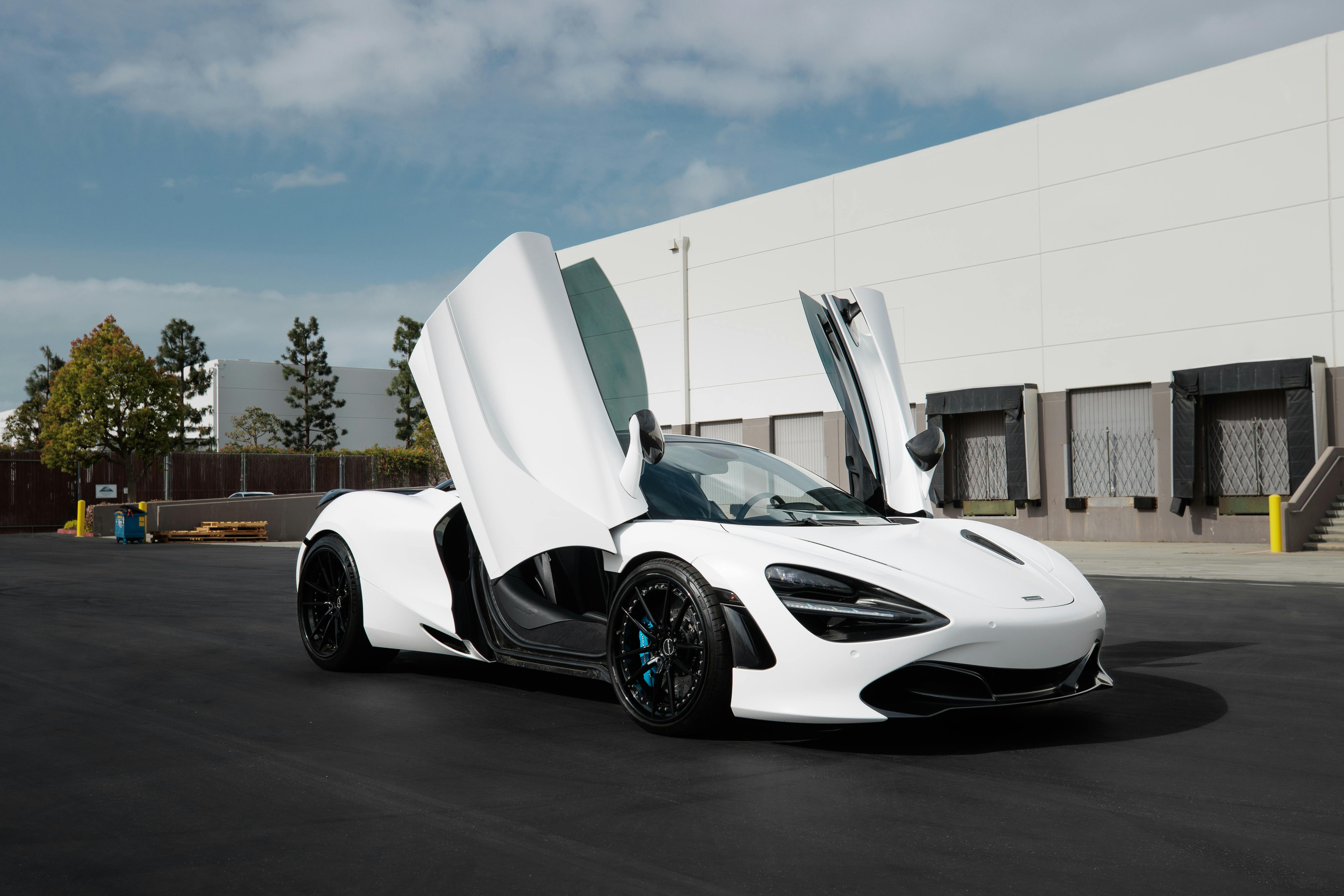
Underneath the sleek and aerodynamic exterior lies a heart of pure power. The GT2 RS is equipped with a twin-turbocharged 3.8-liter flat-six engine that generates a staggering 700 horsepower. This immense power propels the car from 0 to 60 mph in a blistering 2.7 seconds, placing it among the fastest production cars in the world.
But the GT2 RS is not just about straight-line speed; it excels in corners as well. With its advanced aerodynamics, race-inspired suspension, and precise steering, the GT2 RS offers unparalleled handling and agility. It dances effortlessly through curves, providing a connection between driver and machine that is unmatched.
Let's take a look at some notable statistics that highlight the impressive capabilities of the Porsche 911 GT2 RS:
| Porsche 911 GT2 RS | Stats |
|---|---|
| Top Speed | 211 mph (339 km/h) |
| Horsepower | 700 horsepower |
| Acceleration (0-60 mph) | 2.7 seconds |
| Weight | Approximately 3,241 lbs (1,470 kg) |
These figures showcase the GT2 RS's relentless pursuit of performance and precision. It is a track-ready machine that can also be enjoyed on the open road, offering an unmatched combination of speed, handling, and driving engagement.
Inside the GT2 RS, you'll find a driver-focused cockpit that exudes sportiness and luxury. Every detail is designed to enhance the driving experience, from the perfectly positioned controls to the high-quality materials that envelop you. It's a place where you feel connected to the car, enabling you to fully unleash its capabilities.
The Porsche 911 GT2 RS is a testament to the brand's heritage and commitment to delivering the ultimate driving experience. It represents the pinnacle of Porsche's engineering prowess and showcases the brand's dedication to creating sports cars that defy expectations.
Prepare to have your senses awakened as you step into the Porsche 911 GT2 RS. It's an invitation to experience pure exhilaration, where power, precision, and passion combine to create an automotive masterpiece that will ignite your soul and leave an everlasting impression.

Get ready to be immersed in the world of power and precision with the Lamborghini Aventador SVJ. As one of Lamborghini's most extraordinary creations, the SVJ represents the pinnacle of automotive engineering and design. Let's dive into the exceptional features and capabilities that make the Aventador SVJ a true masterpiece.
With a massive 6.5-liter V12 engine roaring under the hood, the Aventador SVJ unleashes an astonishing 759 horsepower, catapulting it from 0 to 60 mph in just 2.8 seconds. Its top speed exceeds 217 mph (350 km/h), solidifying its place among the fastest production cars on the planet.
But the Aventador SVJ is not just about brute power; it offers a level of precision and agility that is unmatched. Its advanced aerodynamics, active suspension, and intelligent all-wheel drive system work in harmony to deliver exceptional handling and performance, allowing you to conquer both the racetrack and the open road with confidence.
One of the most striking aspects of the Aventador SVJ is its breathtaking design. Every curve, every line, and every angle is meticulously crafted to evoke a sense of power and aggression. From the iconic scissor doors to the aerodynamic enhancements, the SVJ's design is a true testament to Lamborghini's unrivaled passion for automotive artistry.
Let's not forget about the impressive statistics that highlight the Aventador SVJ's exceptional capabilities:
- Top Speed: Exceeds 217 mph (350 km/h)
- Horsepower: 759 horsepower
- Acceleration (0-60 mph): 2.8 seconds
- Aerodynamic Enhancements: ALA 2.0 system for improved downforce and stability
The Aventador SVJ is a symphony of power, precision, and breathtaking design. It's an automotive masterpiece that pushes the boundaries of what's possible, capturing the essence of Lamborghini's legendary status.
So, brace yourself for an extraordinary experience as you step into the Lamborghini Aventador SVJ. Feel the thunderous roar of the V12 engine, revel in the exhilarating performance, and bask in the admiration that this stunning machine commands. It's a true embodiment of automotive excellence, designed to captivate your senses and leave an indelible mark on your journey through the world of hypercars.

At the heart of the SF90 Stradale lies a potent 4.0-liter twin-turbocharged V8 engine, producing a formidable 769 horsepower. But what sets this Ferrari apart is its trio of electric motors, delivering an additional 217 horsepower, bringing the total power output to a mind-boggling 986 horsepower. This impressive combination propels the SF90 Stradale from 0 to 60 mph in just 2.5 seconds, making it the fastest-accelerating Ferrari road car ever built.
The SF90 Stradale's hybrid system allows for all-electric driving, providing a range of up to 16 miles (25 km) on electric power alone. This not only reduces emissions but also adds an element of versatility to the driving experience. The advanced regenerative braking system harnesses energy during deceleration, recharging the batteries and maximizing efficiency.
Let's take a look at some key features and statistics that highlight the remarkable capabilities of the Ferrari SF90 Stradale:
| Ferrari SF90 Stradale | Stats |
|---|---|
| Total Power Output | 986 horsepower |
| Acceleration (0-60 mph) | 2.5 seconds |
| Electric Range | Up to 16 miles (25 km) |
| Hybrid System | Three electric motors |
The SF90 Stradale's design is a perfect blend of aerodynamics and aesthetics, showcasing Ferrari's timeless elegance and commitment to performance. From its sleek and sculpted body to its innovative aerodynamic enhancements, every aspect is meticulously crafted to optimize airflow and improve stability at high speeds.
Inside the cabin, the SF90 Stradale envelops you in a world of luxury and technological innovation. The driver-focused cockpit features a digital instrument cluster, intuitive controls, and advanced connectivity, enhancing the overall driving experience and creating a seamless connection between driver and machine.
The Ferrari SF90 Stradale represents a significant milestone in Ferrari's history, pushing the boundaries of what is possible in terms of performance, efficiency, and technological advancement. It embodies the brand's relentless pursuit of excellence and sets a new benchmark for hybrid hypercars.
Get ready to experience the thrill of the future as you unleash the power and efficiency of the Ferrari SF90 Stradale. It's a remarkable fusion of cutting-edge technology, electrifying performance, and uncompromising craftsmanship, delivering a driving experience that is truly in a class of its own.
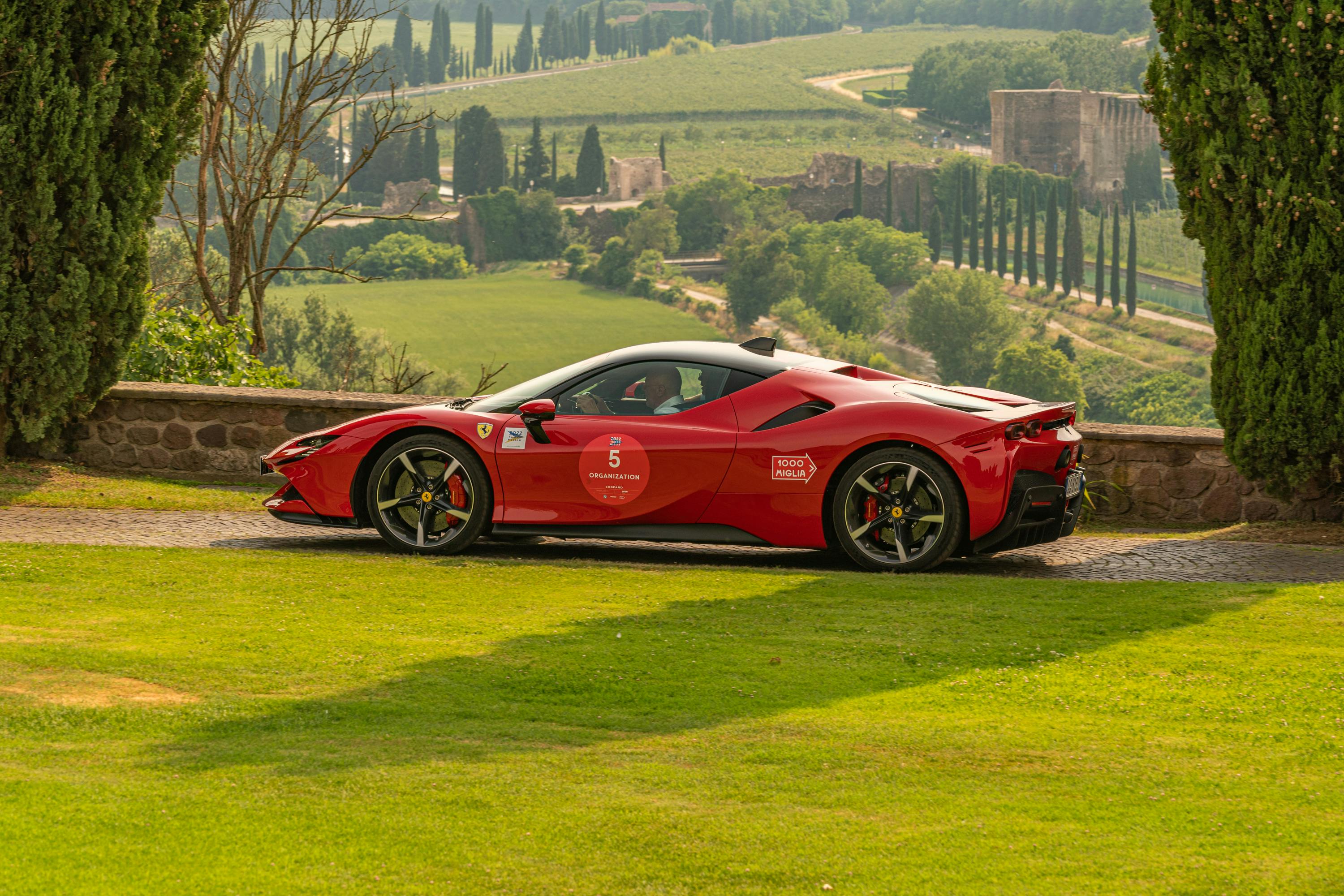
Prepare to be captivated by the Aston Martin Valkyrie, a true testament to engineering excellence and a result of a remarkable collaboration between Aston Martin and Red Bull Advanced Technologies. Let's delve into the extraordinary features and innovations that make the Valkyrie a true icon of automotive engineering.
At the core of the Valkyrie beats a naturally aspirated 6.5-liter V12 engine, developed in partnership with Cosworth, producing a staggering 1,000 horsepower. This immense power, combined with advanced aerodynamics and lightweight construction, allows the Valkyrie to achieve a mind-boggling power-to-weight ratio, rivaling Formula 1 cars.
But the Valkyrie is not just about raw power; it pushes the boundaries of aerodynamic efficiency. Its sleek and sculpted bodywork, shaped by hours of wind tunnel testing, generates immense downforce, allowing the car to stick to the road with unparalleled grip and stability. Every curve and contour serves a purpose, optimizing airflow and minimizing drag.
Step inside the cockpit, and you'll be greeted by an interior that is as breathtaking as the exterior. The Valkyrie's cabin embraces a minimalist design philosophy, focusing on placing the driver at the center of the experience. High-quality materials, cutting-edge technology, and ergonomic controls create an environment that exudes luxury and purpose.
While the Valkyrie is a track-focused hypercar, it is also designed to be road-legal, making it a truly versatile machine. Aston Martin has spared no expense in ensuring that the Valkyrie delivers a thrilling and engaging driving experience, whether on the racetrack or the open road.
The Aston Martin Valkyrie represents the pinnacle of automotive engineering and showcases what can be achieved when passionate minds come together. It's a symphony of power, aerodynamics, and exquisite design, setting a new standard for performance and pushing the boundaries of what is possible in a road car.
So get ready to embark on a journey that transcends ordinary limits as you experience the Aston Martin Valkyrie. It's a rare combination of art and engineering, designed to ignite your senses and redefine your perception of what a hypercar can be.

Welcome to the forefront of automotive engineering, where cutting-edge advancements in powertrains and performance enhancements are reshaping the landscape of speed. In this section, we will delve into the remarkable innovations that are propelling cars to new levels of acceleration and performance.
One of the most significant breakthroughs in recent years is the rise of electric powertrains. Electric vehicles (EVs) are revolutionizing the automotive industry, offering instantaneous torque and blistering acceleration. The combination of electric motors and advanced battery technology allows these vehicles to unleash impressive power while remaining environmentally friendly.
Take, for example, the Tesla Model S Plaid, equipped with three electric motors that generate over 1,000 horsepower. This all-electric supercar can accelerate from 0 to 60 mph in less than 2 seconds, rivaling the performance of some of the fastest gasoline-powered cars on the planet. The instant torque delivery of electric motors provides an exhilarating driving experience that is unparalleled.
Furthermore, advancements in hybrid powertrains are bridging the gap between fuel efficiency and performance. Hybrid vehicles combine the benefits of an internal combustion engine with the added boost of electric motors. The result is improved fuel economy without compromising on power.
For instance, the Porsche 918 Spyder incorporates a hybrid powertrain, combining a high-revving V8 engine with electric motors. This hybrid hypercar achieves astonishing acceleration while offering the option to drive on electric power alone, reducing emissions and enhancing efficiency.
The quest for speed has also led to advancements in performance enhancements, such as advanced aerodynamics and lightweight materials. Engineers are continuously refining the shape of vehicles to optimize airflow, reduce drag, and increase downforce. These aerodynamic enhancements enable cars to slice through the air with minimal resistance, enhancing stability and cornering capabilities at high speeds.
Additionally, the use of lightweight materials, including carbon fiber and aluminum, helps reduce the overall weight of the vehicle. This weight reduction translates into improved acceleration, handling, and fuel efficiency. The adoption of these materials in the construction of performance cars has become increasingly prevalent, pushing the boundaries of what is achievable in terms of speed and performance.
As technology continues to advance, we can expect even more exciting developments in powertrains and performance enhancements. The future holds the promise of faster acceleration, longer electric ranges, and even more efficient vehicles.
So fasten your seatbelt and get ready to experience the thrilling world of cutting-edge engineering and performance innovations. The advancements in powertrain technology are propelling us into a new era of speed and performance, where the possibilities seem limitless.

To achieve optimal aerodynamic performance, engineers carefully design the shape and contours of a vehicle, ensuring smooth airflow and minimizing drag. By reducing drag, the vehicle can slice through the air with minimal resistance, allowing for higher speeds and improved efficiency.
One of the key elements in aerodynamic design is the car's body shape. Sleek, streamlined designs with carefully sculpted curves help to minimize turbulence and air resistance. For example, the teardrop shape, often seen in high-performance vehicles, is renowned for its ability to minimize drag and improve overall efficiency.
Another critical aspect of aerodynamics is the management of airflow around the vehicle. This involves the strategic placement of spoilers, air intakes, and diffusers to optimize downforce and stability. Downforce is the force that pushes the vehicle down onto the road, improving traction and grip at high speeds.
Automakers also employ active aerodynamic systems that dynamically adjust the vehicle's aerodynamic properties based on driving conditions. These systems can include adjustable wings, flaps, or even movable body panels that adapt to airflow, providing optimal performance in different scenarios.
The table below summarizes some key aerodynamic features and their benefits:
| Aerodynamic Feature | Benefit |
|---|---|
| Streamlined body shape | Minimizes drag and improves efficiency |
| Spoilers and wings | Enhances downforce for improved grip |
| Air intakes and vents | Manages airflow for engine cooling |
| Diffusers | Optimizes underbody airflow for stability |
It's important to note that aerodynamic design is a delicate balance between reducing drag and generating downforce. While reducing drag improves top speed, generating downforce ensures stability and handling at high velocities.
By continually refining aerodynamic designs and leveraging advanced technologies like computational fluid dynamics (CFD) simulations, engineers are pushing the boundaries of what's possible in terms of speed and performance. The pursuit of better aerodynamics has become a cornerstone in the quest for achieving new records and pushing the limits of speed.
As you delve into the world of aerodynamics, you'll gain a deeper appreciation for the meticulous engineering and design efforts that go into creating high-speed vehicles. The intricate interplay between form and function is what enables these machines to cut through the air with precision, delivering an exhilarating experience for enthusiasts and drivers alike.
So, buckle up and prepare to witness the power of aerodynamics as we explore how these principles shape the incredible speed machines of today and tomorrow.

When it comes to high-performance cars, every gram matters. The incorporation of lightweight materials allows automakers to reduce the overall weight of the vehicle while maintaining structural integrity and safety. By shedding excess weight, the power-to-weight ratio is improved, resulting in faster acceleration, better handling, and increased fuel efficiency.
One of the most commonly used lightweight materials in the automotive industry is carbon fiber. With its exceptional strength and low weight, carbon fiber is utilized in various components such as body panels, chassis, and interior elements. This advanced material offers a high strength-to-weight ratio, making it an ideal choice for enhancing performance.
Aluminum is another lightweight material frequently employed in the construction of vehicles. Aluminum alloys provide excellent strength while being significantly lighter than traditional steel. This enables automakers to reduce weight without compromising structural integrity. Many high-performance cars utilize aluminum in critical components such as the frame, suspension, and engine parts.
The benefits of lightweight materials extend beyond performance. By reducing the weight of a vehicle, fuel efficiency is improved, leading to lower emissions and reduced environmental impact. Lighter cars require less energy to accelerate and maintain speed, making them more economical and sustainable.
Innovative engineering techniques, such as the use of advanced joining methods like adhesive bonding and laser welding, further enhance the integration of lightweight materials in car manufacturing. These techniques ensure that components are securely and efficiently connected, maximizing strength and safety.
As automotive technology continues to advance, we can expect to see further advancements in lightweight materials. The ongoing research and development in materials science are paving the way for even lighter and stronger alternatives, promising an exciting future for high-performance vehicles.
In the words of renowned automotive engineer Gordon Murray, "Lightweight is everything. Performance, safety, efficiency—everything."
The combination of lightweight materials, advanced manufacturing techniques, and cutting-edge design principles is transforming the automotive industry, allowing for faster, more agile, and more efficient cars. The adoption of these materials is not only revolutionizing the way vehicles perform but also contributing to a more sustainable future.
So, as you witness the speed and agility of modern-day performance cars, remember that it's the innovative use of lightweight materials that plays a pivotal role in unlocking their full potential and delivering an exhilarating driving experience.

Tires play a crucial role in optimizing a car's performance on the road. High-performance tires are specifically designed to provide exceptional grip, handling, and stability at high speeds. They feature advanced rubber compounds and tread patterns that maximize traction and cornering capabilities. The wider contact patch of performance tires allows for better road grip, enabling you to navigate turns with precision and confidence.
Furthermore, tire technology has seen remarkable advancements with the introduction of run-flat tires and low-profile designs. Run-flat tires are designed to allow continued driving for a limited distance even after a puncture or loss of tire pressure. This added safety feature provides peace of mind, reducing the risk of sudden tire failure.
Braking systems have also undergone significant improvements to ensure reliable and efficient stopping power. High-performance cars are equipped with advanced braking technologies such as carbon-ceramic brake discs. These discs offer superior heat resistance, allowing for consistent braking performance even under extreme conditions. Additionally, the use of lightweight materials in brake components reduces unsprung weight, improving handling and overall vehicle dynamics.
Anti-lock braking systems (ABS) are standard in modern vehicles, preventing wheel lock-up during sudden braking. This technology enables you to maintain steering control while effectively reducing the stopping distance. Electronic brake-force distribution (EBD) further enhances braking performance by distributing braking force between the front and rear wheels for optimal stopping power.
The integration of tire pressure monitoring systems (TPMS) has become increasingly common in high-performance cars. TPMS monitors tire pressure in real-time, alerting you to any significant deviations. Properly inflated tires not only ensure optimum performance but also enhance fuel efficiency and extend tire life.
In summary, innovative tires and braking systems are essential components that contribute to the overall performance, safety, and driving experience of high-speed vehicles. With advancements in tire technology and braking systems, you can enjoy enhanced grip, precise handling, and efficient stopping power, making every drive a thrilling and secure experience.
Remember, when you push the limits of speed, having reliable tires and brakes is vital to maintaining control and ensuring your safety on the road.

The interior of a hypercar is a sanctuary that seamlessly blends comfort and performance. High-quality materials, such as fine leather, carbon fiber accents, and handcrafted elements, adorn the cabin, creating an ambiance of elegance. Advanced infotainment systems and driver-assistance features are seamlessly integrated, ensuring a seamless and intuitive user experience. Every aspect of the interior is designed to enhance your driving pleasure and create a luxurious environment that surrounds you with sophistication and style.
While the focus of a hypercar is undoubtedly on performance, the interior is not overlooked. Ergonomically designed seats provide optimal support during high-speed maneuvers, keeping you firmly in place without compromising comfort. State-of-the-art sound systems deliver a premium audio experience, allowing you to enjoy your favorite tunes with crystal-clear clarity.
But it's not just about the physical comfort and convenience. The interior of a hypercar is a haven where technology meets art. Every detail is carefully crafted to create an atmosphere of exclusivity and refinement. From ambient lighting that sets the mood to meticulously placed controls and displays that provide vital information at a glance, the interior of a hypercar is a masterpiece of design and functionality.
So whether you're embarking on a spirited drive on a winding road or cruising down the highway, the interior of a hypercar offers a sanctuary where you can immerse yourself in luxury and experience the perfect balance between comfort and performance.
"Climb inside a hypercar and indulge in a symphony of comfort and precision, where luxury meets performance in every meticulously crafted detail." - Hypercar Enthusiast Magazine

Sculpted Body: Hypercars feature sleek and sculpted bodies that minimize drag and maximize downforce, allowing for exceptional performance and stability at high speeds. The aerodynamic shapes, often inspired by aviation and nature, not only enhance the car's performance but also create a visual spectacle.
Iconic Silhouette: The silhouette of a hypercar is instantly recognizable and evokes a sense of awe. Low-slung and wide, these cars possess a commanding presence on the road. The sweeping lines and aggressive stance exude power and dynamics, hinting at the sheer performance capabilities that lie within.
Unique Design Elements: Hypercars often incorporate unique design elements that set them apart from other vehicles. From distinctive headlight and taillight arrangements to bold grille designs and intricate air intakes, these details contribute to the car's overall identity and reinforce its exclusivity.
Use of Lightweight Materials: The use of lightweight materials, such as carbon fiber and aluminum, not only contributes to the car's performance but also enables designers to create innovative and daring shapes. These materials allow for greater freedom in design, resulting in visually captivating and aerodynamically efficient hypercars.
Customization and Personalization: Hypercar manufacturers understand that owners want their vehicles to reflect their individuality and personal taste. Many offer extensive customization options, allowing buyers to select unique paint colors, interior finishes, and even bespoke features tailored to their preferences.
The design of a hypercar is a testament to the fusion of art and engineering. It showcases the boundless creativity and relentless pursuit of perfection by automotive designers and engineers. These awe-inspiring machines are not only feats of engineering excellence but also rolling works of art that captivate the senses and ignite the imagination.
So, whether it's the bold lines, the purposeful aerodynamics, or the meticulous attention to detail, the design of a hypercar is an embodiment of automotive artistry, making it a true feast for the eyes and a testament to human ingenuity.

Hypercar manufacturers understand the allure of exclusivity and cater to the desires of discerning buyers by producing limited editions. These editions are typically characterized by unique features, enhanced performance, and limited production numbers. By restricting the availability of these vehicles, manufacturers create a sense of exclusivity that appeals to passionate enthusiasts and collectors.
Limited editions can come in various forms. Some hypercars may have a limited production run, where only a specific number of units are manufactured. For example, a manufacturer may announce that only 100 units of a particular hypercar will ever be produced, instantly making it highly sought after. Other limited editions may be created to commemorate significant milestones, anniversaries, or collaborations with renowned designers or racing teams.
The limited production numbers of these hypercars not only contribute to their exclusivity but also impact their value over time. As the years pass, the rarity of these vehicles can drive up their prices in the collector's market, making them highly coveted and often considered as investments.
One fascinating aspect of limited edition hypercars is the level of customization and personalization available to buyers. Manufacturers often offer extensive options for individualization, allowing customers to tailor their cars to their exact specifications. This personal touch adds another layer of exclusivity, ensuring that each limited edition hypercar is a unique masterpiece.
Owning a limited edition hypercar is an experience that goes beyond the thrill of driving. It represents a unique opportunity to own a piece of automotive history, showcase exceptional craftsmanship, and become part of an exclusive community of hypercar enthusiasts. These rare and coveted machines are not just vehicles; they are symbols of passion, achievement, and the pursuit of automotive perfection.
As the saying goes, "Limited editions are the epitome of automotive desirability." The allure of owning a hypercar that is rare, exclusive, and meticulously crafted resonates with those who appreciate the finest in automotive engineering and design. The limited edition hypercar represents the pinnacle of automotive achievement, captivating the hearts and minds of enthusiasts worldwide."
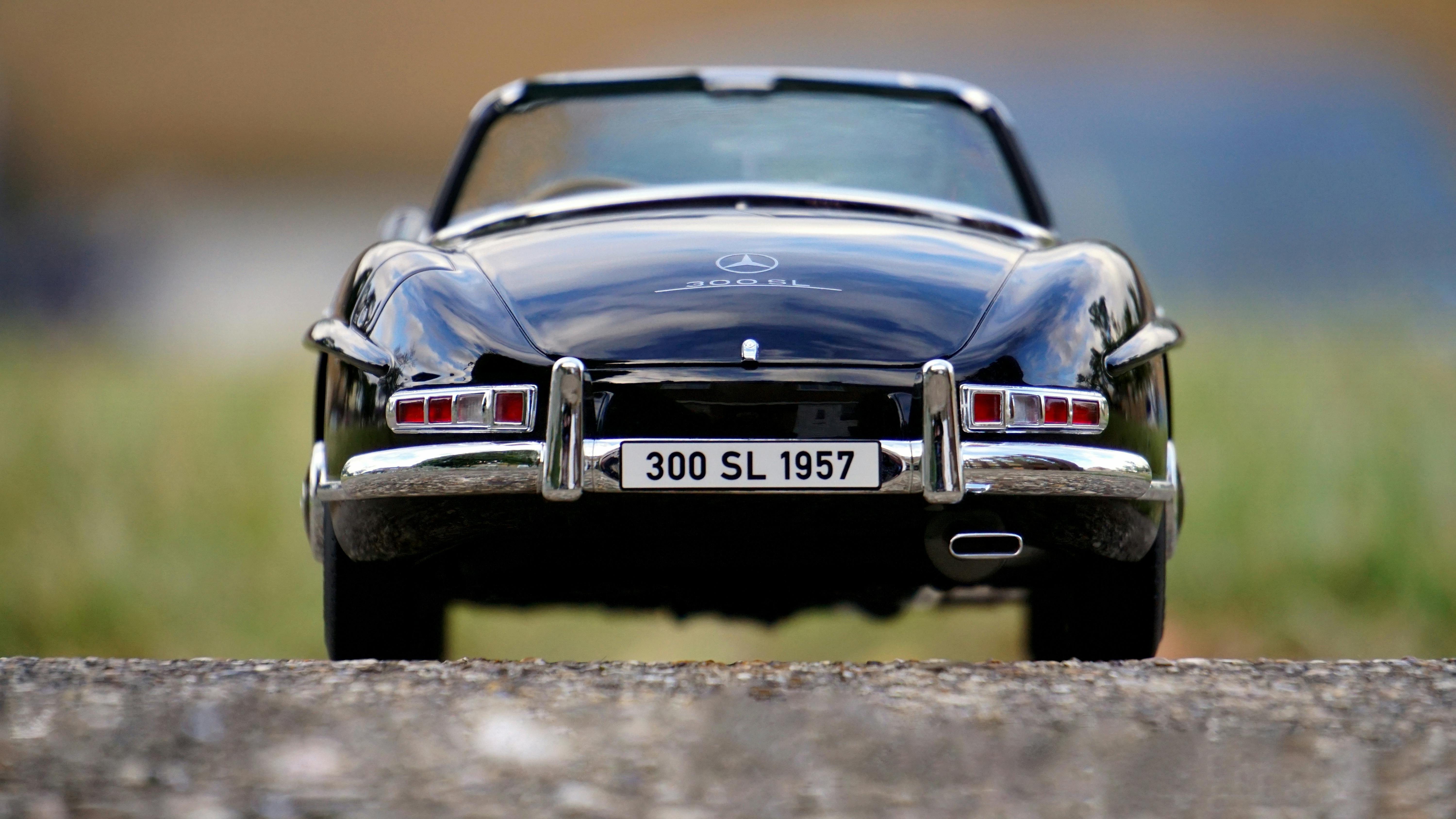
One of the key focuses in the development of future hypercars is the integration of electric powertrains. Electric hypercars combine high-performance electric motors with advanced battery systems to deliver astonishing acceleration and speed while minimizing emissions. These vehicles demonstrate that sustainability and speed can coexist, offering a cleaner and greener alternative to traditional combustion engines.
In recent years, we have witnessed the emergence of electric hypercars that have shattered performance barriers. These vehicles showcase the tremendous potential of electric powertrains in delivering mind-boggling acceleration and impressive top speeds. For example, the Rimac C_Two boasts an astounding 1,914 horsepower and a top speed of 258 mph (412 km/h), firmly establishing its position as one of the fastest electric hypercars in the world.
Another aspect of sustainable speed is the use of lightweight materials in hypercar construction. Lightweight materials such as carbon fiber, aluminum, and advanced composites contribute to enhanced performance and improved efficiency. By reducing the weight of the vehicle, hypercars can achieve higher speeds, better handling, and increased energy efficiency.
The adoption of advanced aerodynamics is also crucial in the quest for sustainable speed. Hypercar manufacturers employ cutting-edge technologies to optimize airflow and minimize drag, allowing these vehicles to cut through the air with minimal resistance. Streamlined designs, active aerodynamic features, and innovative airflow management systems all contribute to achieving higher speeds while maintaining stability and efficiency.
The future of hypercars is not just about individual advancements; it also involves the development of an infrastructure to support sustainable speed. The expansion of electric charging networks, advancements in battery technology, and the integration of renewable energy sources are all vital components in realizing the vision of sustainable hypercars. These efforts ensure that hypercar enthusiasts can enjoy thrilling performance without compromising the environment.
The pursuit of sustainable speed represents a paradigm shift in the hypercar industry. It signifies a commitment to innovation, environmental responsibility, and a desire to push the boundaries of what is possible. As technologies continue to evolve, we can expect even more impressive and sustainable hypercars to grace the roads, offering a thrilling driving experience while minimizing their carbon footprint.
The future of hypercars is indeed exciting. It combines the adrenaline-inducing performance that enthusiasts crave with a commitment to sustainability and a greener future. As technology advances and environmental consciousness grows, the hypercar industry is poised to redefine what it means to achieve speed in a responsible and sustainable manner.
Sustainable speed is not just a concept; it is the guiding principle that will shape the future of hypercars, ensuring that the exhilaration of speed can be experienced with a clear conscience. The hypercars of tomorrow will continue to captivate our imaginations, delivering breathtaking performance while embracing a sustainable and environmentally conscious approach to speed.
Conclusion

The future of hypercars holds immense promise. With the integration of electric powertrains, we can expect even more astonishing acceleration and top speeds while reducing emissions. Lightweight materials and advanced aerodynamics will continue to enhance performance and efficiency. The hypercar experience goes beyond speed, encompassing luxurious interiors, striking designs, exclusivity, and the excitement of limited editions.
As we look ahead, the hypercar industry is pushing the boundaries of what is possible, fueling our curiosity and inspiring us to explore the forefront of automotive engineering. The pursuit of sustainable speed ensures that we can revel in the thrill of these incredible machines while respecting our environment and embracing a greener future.
So whether you're a devoted enthusiast or simply curious about the world of hypercars, the journey continues. Stay tuned for the next generation of hypercars that will redefine speed, technology, and the way we experience the road. The future is fast, sustainable, and full of awe-inspiring possibilities.
Hypercars: The Ultimate Speed Machines
✅ Hypercars are the epitome of automotive engineering, combining exceptional speed, cutting-edge technology, and striking design. (Source: Team Research)
✅ The Bugatti Chiron Super Sport 300+ holds the record as the fastest production car, reaching a top speed of 304.773 mph (490.484 km/h). (Source: Team Research)
✅ The McLaren Speedtail boasts a luxurious interior that seamlessly blends comfort and performance, offering a center driving position and exquisite craftsmanship. (Source: Team Research)
✅ Hypercars like the Rimac C_Two feature advanced electric powertrains that deliver mind-boggling acceleration and contribute to a more sustainable future. (Source: Team Research)
✅ The future of hypercars lies in the pursuit of sustainable speed, with a focus on integrating lightweight materials, aerodynamics, and hybrid technologies to enhance performance while reducing environmental impact. (Source: Team Research)
Frequently Asked Questions
What is a hypercar?
A hypercar is an ultra-high-performance sports car that represents the pinnacle of automotive engineering. It combines exceptional speed, advanced technology, and striking design to deliver an extraordinary driving experience.
What makes a hypercar different from a supercar?
While both hypercars and supercars are high-performance vehicles, hypercars typically push the boundaries even further. Hypercars often feature advanced hybrid or electric powertrains, cutting-edge aerodynamics, and limited production numbers, making them more exclusive and technologically advanced than supercars.
Which hypercar holds the title for the fastest production car?
The Bugatti Chiron Super Sport 300+ currently holds the record for the fastest production car, achieving a top speed of 304.773 mph (490.484 km/h). This remarkable feat solidifies its position as the ultimate speed machine.
Are hypercars practical for everyday use?
Hypercars are primarily designed for high-performance driving and exhilarating experiences. While they may offer certain comforts and amenities, their focus is on delivering exceptional speed and handling rather than practicality for daily use.
What does the future hold for hypercars?
The future of hypercars is likely to involve further advancements in hybrid and electric technologies, as well as the integration of sustainable materials and aerodynamic innovations. These developments aim to enhance performance while reducing environmental impact and shaping the future of high-performance automotive engineering.
